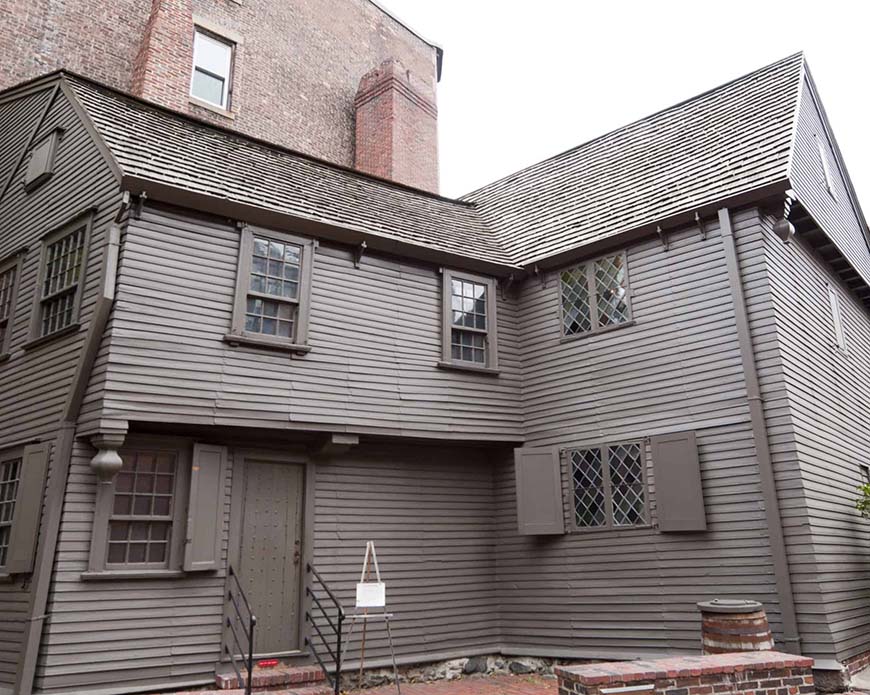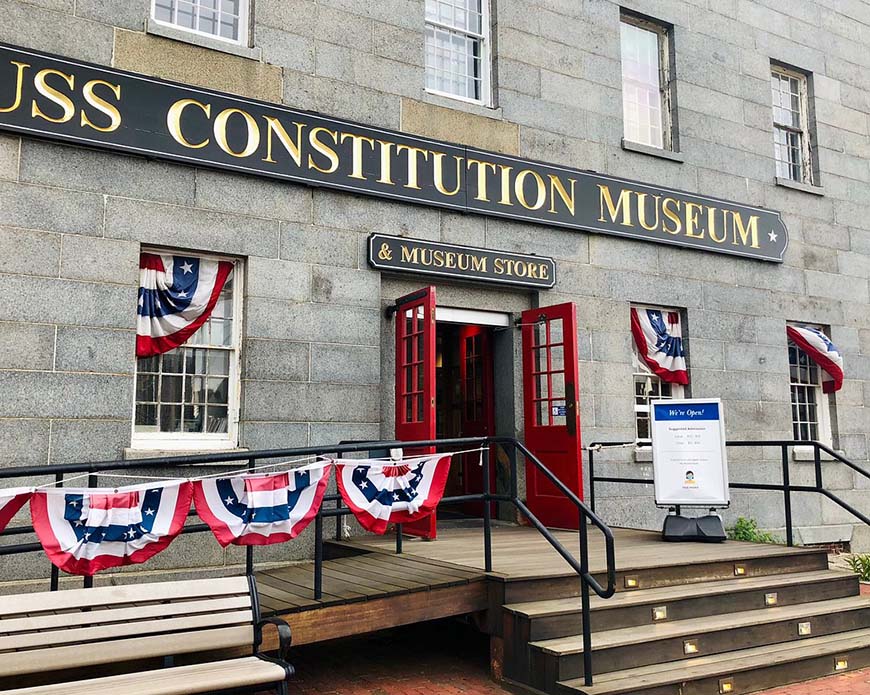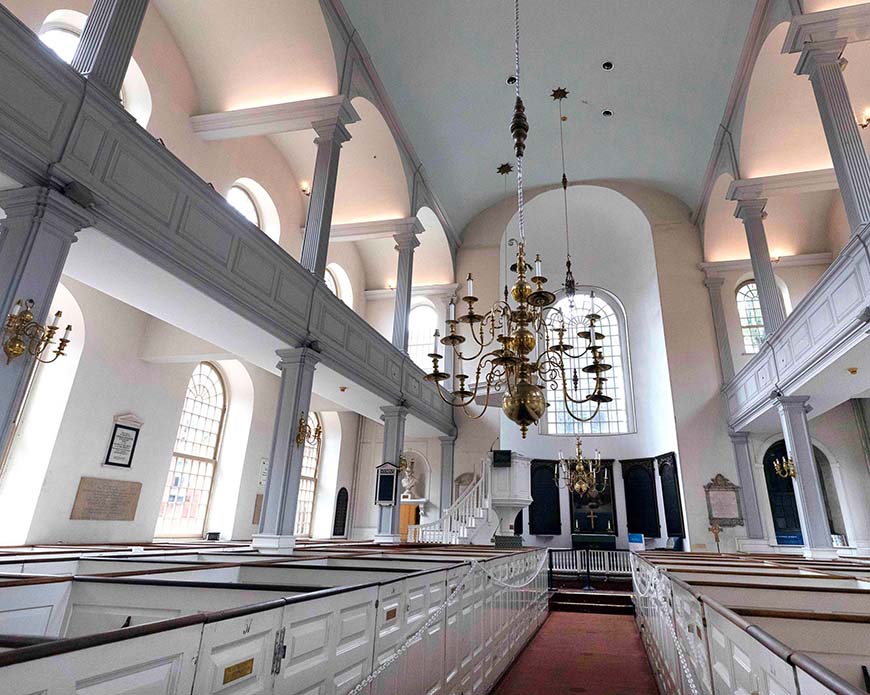In over a decade of exploring the world’s wonders, I’ve come to appreciate the magic of each destination’s unique story. Boston, with its rich history and vibrant spirit, was a place I’d been itching to visit for years. When I finally set foot in this historic city, it was the Freedom Trail that beckoned me with its promise of a journey through time and tales that would leave me awestruck. Join me on this exhilarating adventure along the Freedom Trail, where every step is a step through history.
The Freedom Trail Unveiled
The Freedom Trail, as the name suggests, is a red-brick path that winds its way through the heart of Boston, connecting 16 historically significant sites that played pivotal roles in the American Revolution. These aren’t just any sites; they are the bedrock of American history. As I embarked on this trail, it was like stepping into a time machine, with each brick beneath my feet whispering tales of courage, rebellion, and the birth of a nation.
Boston Common: The Beginning of a Storied Journey
My journey began at the Boston Common, the oldest public park in the United States. The lush greenery and serene surroundings gave me a moment of respite before delving into history. From here, I picked up my Freedom Trail map and guide, and I was off on my adventure.
As I strolled through the Boston Common, I couldn’t help but feel the weight of history all around me. The Common had witnessed gatherings and protests that would shape the nation’s destiny. It was a serene oasis in the heart of the city, and it offered a peaceful start to my journey. Admission to the Boston Common is free, making it accessible to all.
Paul Revere’s House: A Brush with a Revolutionary Icon

One of the first stops on my journey was the Paul Revere House, the former home of the legendary silversmith and patriot Paul Revere. As I stood in front of the humble abode, it was as if I could hear the clatter of hooves and the urgent cries of “The British are coming!” that had once echoed through these historic streets.
The house, built in 1680, was a time capsule of the 18th century, and I stepped through its threshold with a sense of reverence. The creaking wooden floors and low ceilings transported me back to a time when the fate of a nation hung in the balance. I marveled at the collection of colonial artifacts, each with a story to tell. The price of admission was a mere $5 for adults, a small sum for the privilege of standing on hallowed ground.
Old North Church: Lanterns and Legends
The next stop on my journey was the Old North Church, famous for its role in the Midnight Ride of Paul Revere. The church was a soaring beacon of history, and I couldn’t help but be struck by its iconic steeple, which had once held the lanterns that signaled the approach of British troops. As I gazed up at those lanterns, I was awestruck by the magnitude of the events that had unfolded here.
Inside the church, I marveled at the graceful beauty of the pews and the soft glow of the historic chandeliers. The docents were a wealth of knowledge, regaling visitors with stories of the church’s past and its enduring significance. Admission was a reasonable $8 for adults, and I gladly paid it to be a part of living history.
The Old State House: Where History Echoes
The Freedom Trail led me to the Old State House, a building that had borne witness to countless historic events. The very spot where the Declaration of Independence was first read to the people of Boston! It was a place where history echoed in every corner.
I ventured inside and marveled at the restored chambers and period-accurate exhibits. As I climbed the grand staircase, I couldn’t help but think of the brave souls who had once trod these steps, advocating for their vision of a free nation. The admission fee was a reasonable $10 for adults, a small price to pay to stand in the footsteps of revolutionaries.
Faneuil Hall: A Hub of History and Commerce
My next stop was Faneuil Hall, a bustling marketplace and a symbol of Boston’s enduring spirit. It was a place where history had intersected with commerce, and its vibrancy was infectious. The place was alive with street performers and market stalls, and I couldn’t resist picking up some Boston-themed souvenirs.
As I made my way inside Faneuil Hall, I was transported back in time to the fiery debates of the revolution. The Great Hall was an evocative space where patriots had once gathered to discuss their dreams of liberty. It was a powerful reminder of the voices that had rung through these hallowed walls. I was pleased to find that admission was free, making it accessible to all.
USS Constitution Museum: A Living Legend

My journey along the Freedom Trail took me to the USS Constitution Museum, where I encountered a living legend – the USS Constitution, the world’s oldest commissioned warship afloat. The ship’s towering masts and billowing sails were a breathtaking sight, and I couldn’t help but marvel at its storied history.
Inside the museum, I learned about the ship’s battles and the brave sailors who had served on board. The exhibits brought the ship’s history to life, and I felt a profound connection to the past. The USS Constitution Museum offered free admission, ensuring that everyone had the chance to appreciate this living piece of history.
Bunker Hill Monument: Climbing to New Heights
After exploring the captivating history and savoring the flavors of Boston along the Freedom Trail, I arrived at one of the trail’s most iconic stops: the Bunker Hill Monument. This towering obelisk commemorates the Battle of Bunker Hill, a pivotal moment in American history. As I gazed up at the monument, I couldn’t help but feel a sense of anticipation and wonder. Climbing to new heights was the next exciting chapter of my journey.
The Bunker Hill Monument stands at an impressive 221 feet, and while it may seem daunting, I was determined to reach the top for the breathtaking panoramic view of Boston that awaited me. The thought of climbing its 294 steps was a challenge I eagerly accepted.
As I began my ascent, the cool, narrow spiral staircase carried me higher and higher, with each step bringing me closer to the spectacular vista. The climb, although physically demanding, was invigorating. The walls of the monument were etched with graffiti left by visitors throughout the years, a testament to the countless individuals who had made this journey before me.
The climb was not only an opportunity to appreciate the architecture and engineering of the monument but also a chance to reflect on the significance of the Battle of Bunker Hill. The bravery of those who had fought here resonated with each step I took. I couldn’t help but think of the brave patriots who had faced insurmountable odds during the battle, and my admiration for their courage grew with every step.
When I finally reached the summit, the view was nothing short of spectacular. The city of Boston sprawled before me, its modern skyline juxtaposed with historic landmarks. I could see the winding path of the Freedom Trail that I had traversed, each stop a chapter in the story of America’s quest for freedom.
The Charles River glistened in the distance, and the Bunker Hill Monument provided an unrivaled vantage point to appreciate the waterways that had played a crucial role in the American Revolution. I could see the USS Constitution, affectionately known as “Old Ironsides,” docked nearby, a living testament to America’s maritime heritage.
The admission fee for the Bunker Hill Monument was a mere $2 for adults, a small investment for the breathtaking perspective it offered. The monument is open seasonally, so it’s essential to plan your visit accordingly. Visiting early in the day or during the golden hours of late afternoon ensures that you’ll enjoy the best lighting and smaller crowds.
As I descended the monument, I couldn’t help but reflect on the journey I had undertaken along the Freedom Trail. From the Boston Common to the Bunker Hill Monument, each stop had offered a unique perspective on the American Revolution and the birth of a nation. The climb to the summit of the Bunker Hill Monument was the crowning jewel of this historical adventure.
Practical Information: Ticket Prices, Discounts, and Hours
For those planning to embark on the Freedom Trail adventure, it’s essential to have some practical information at your fingertips. The admission prices I’ve mentioned for the various historic sites were current at the time of my visit, but it’s always a good idea to check for any updates before planning your trip.
One of the highlights of visiting the Freedom Trail is the array of discounts available. Many of the sites offer discounts for seniors, students, and active-duty military personnel, making it an affordable adventure for a wide range of visitors. Additionally, if you plan to visit multiple sites, it’s worth considering a bundled ticket option, such as the Freedom Trail Foundation’s Freedom Trail Player Card, which provides access to multiple sites at a reduced rate.
It’s also a good idea to check the opening hours of each site, as they may vary depending on the season. Some sites have limited hours during the winter months, so planning your visit accordingly is essential to make the most of your experience.
A Journey Through Time
As I completed my journey along the Freedom Trail, I couldn’t help but feel a deep sense of gratitude for the opportunity to walk in the footsteps of history. The sites along the trail were not just museums or monuments; they were living, breathing testaments to the ideals that had shaped a nation.
From the Boston Common to the Bunker Hill Monument, each site had a unique story to tell, and it was a privilege to be part of that narrative. The affordable admission prices, discounts, and bundled ticket options made it accessible to all, ensuring that history could be shared and cherished by people from all walks of life.
Boston’s Freedom Trail is not just a historical journey; it’s a journey through time, a journey through the heart of a nation’s birth, and a journey that leaves an indelible mark on the soul. As I walked the last steps of the trail, I knew that I was leaving with more than just memories; I was leaving with a profound connection to the past and a renewed appreciation for the sacrifices and dreams of those who had come before us.
So, if you find yourself in Boston, don’t miss the opportunity to embark on the Freedom Trail. It’s a path that leads not only to historic sites but also to a deeper understanding of the values and aspirations that have shaped the United States. With every step you take, you’ll be one step closer to the heart of history, and it’s a journey you’ll cherish for a lifetime.



